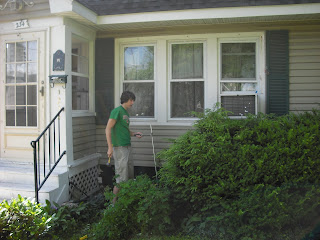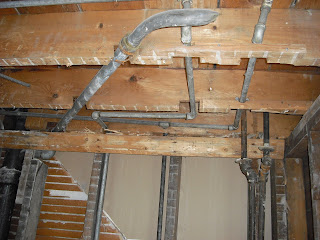The geothermal heat pump works with both the air conditioning and the heating of the house.
The savings for the air conditioning is fairly straight forward. The window air conditioner is already a heat pump, it takes the warm air of the house, runs it over the evaporator, which absorbs heat to a gas being circulated, and then returns the cooler air to the room. The other portion of the air conditioning cycle, the condenser, is outside the house, exposed to ambient air temperature. The air compressor in the unit compressed the warm refrigerant into a hot liquid. The liquid is then run thru a radiator that transfers heat to the surrounding outside air. At the time of air conditioning, the outside air can be 70 to 100 degree F. As the surrounding air gets warmer, the efficiency of the condenser is reduced.
For the geothermal heat pump, instead of outside air, we are using a fluid circulated thru 55 deg. F ground. At the cooler condenser side temperature, the efficiency of the refrigeration cycle is increased, resulting in less electricity being used to run the refrigeration cycle. The efficiency is measured by the Energy Efficiency Ratio, or EER. It is the BTUH Output/Watts of Electricity Input. A typical window air conditioner has an EER of 8. Our geothermal system is rated at 17.
On the heating side, the heat pump has a COP or Coefficient of Performance. For my house this is 4.4. This means that for every 1 unit of electricity, 4.4 units of heat are produced. For electric resistance heat, such as electric baseboard, the COP is 1. The COP efficiency is related to the source of heat. For an air to air heat pump this temperature could vary from 50 degrees down to zero deg. F and below in Syracuse. The COP is reduced as the temperature for transfer of heat is reduced. Once again, the ground is at a constant temperature of 55 degrees for the transfer of heat to the building from the geothermal system.
In addition I am getting the optional domestic hot water preheater. It will preheat the water to 100 deg. when the heat pump is in either in cooling or heating mode.
What are the savings? According to the Water Saver literature, there could be up to a 70% energy savings. I have also heard a figure of 50% energy savings. How that will affect the utility bills, I will have to find out over the next couple of years.



















